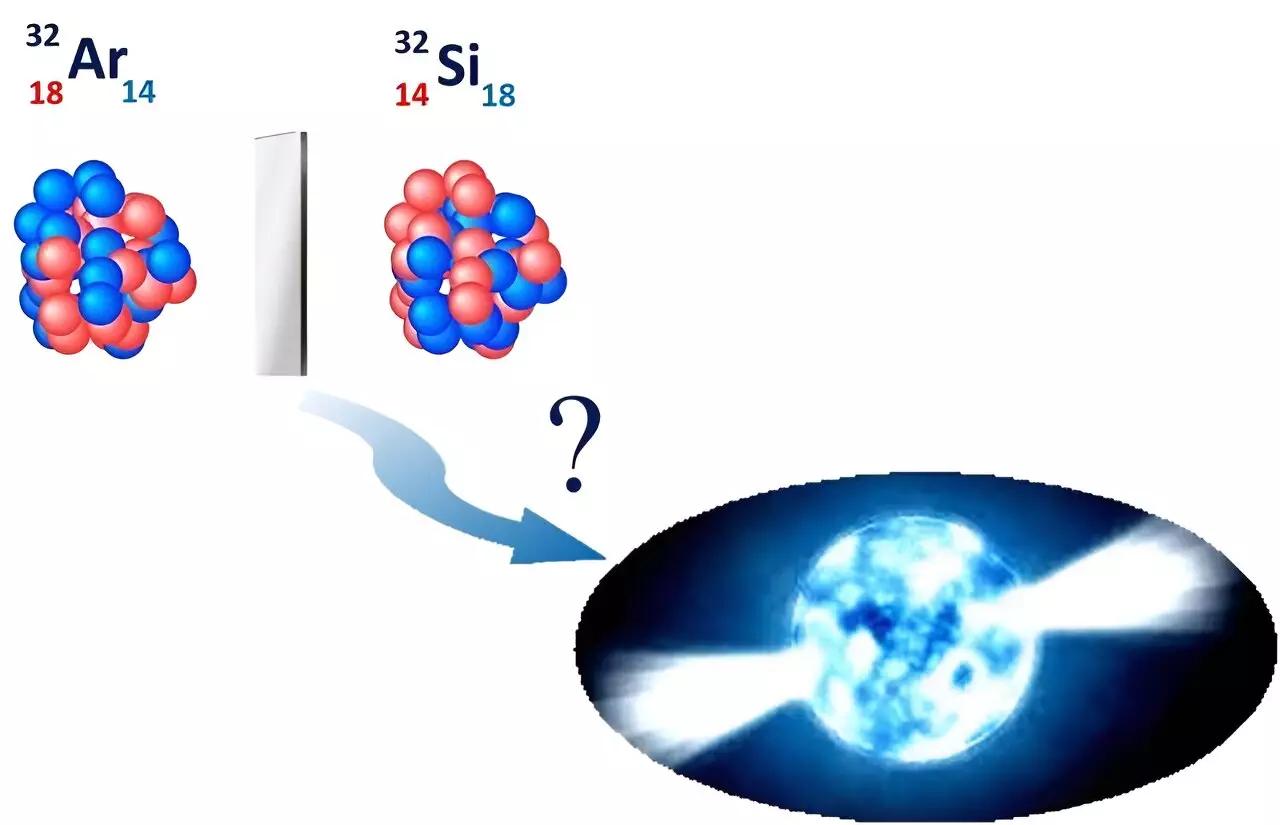The study of atomic nuclei and their components has always presented challenges for scientists seeking to understand the fundamental forces within the universe. One key aspect of this research involves measuring the size of atomic nuclei, which can be done through precision measurements of energy shifts in the atom’s electrons, known as isotope shifts. Recently, researchers conducted laser-assisted measurements of nuclear radii for stable and unstable silicon isotopes, shedding light on the properties of dense neutron matter within objects such as neutron stars.
Despite advancements in nuclear theory, scientists continue to face obstacles in connecting the description of nuclear size with the underlying theory of the strong nuclear force. Questions remain about whether current nuclear theories can accurately describe nuclear matter, which consists of interacting protons and neutrons. This uncertainty is particularly relevant in extreme conditions such as those found in neutron stars.
The researchers in the study utilized laser spectroscopy measurements of atomic isotope shifts at the BEam COoler and LAser spectroscopy facility (BECOLA) at the Facility for Rare Isotope Beams (FRIB) at Michigan State University. By measuring the nuclear radii of different silicon isotopes, including stable silicon-28, silicon-29, silicon-30, and unstable silicon-32, the team was able to establish a benchmark for the development of nuclear theory.
One notable finding from the study was the measurement of the radius of the silicon-32 nucleus and its mirror nucleus, argon-32, which led to constraints on parameters necessary for describing the properties of dense neutron matter within neutron stars. These results not only contribute to the advancement of nuclear theory but also align with constraints derived from gravitational wave observations and other complementary observables.
The laser-assisted measurements of nuclear radii conducted by the researchers represent a significant advancement in our understanding of atomic nuclei and their behavior. By leveraging precision measurements of charge radii, scientists are able to address long-standing questions in nuclear theory and potentially provide insights into the properties of dense matter within astrophysical objects. This study serves as a stepping stone towards a more comprehensive understanding of nuclear physics and the forces that govern the behavior of atomic nuclei.


Leave a Reply